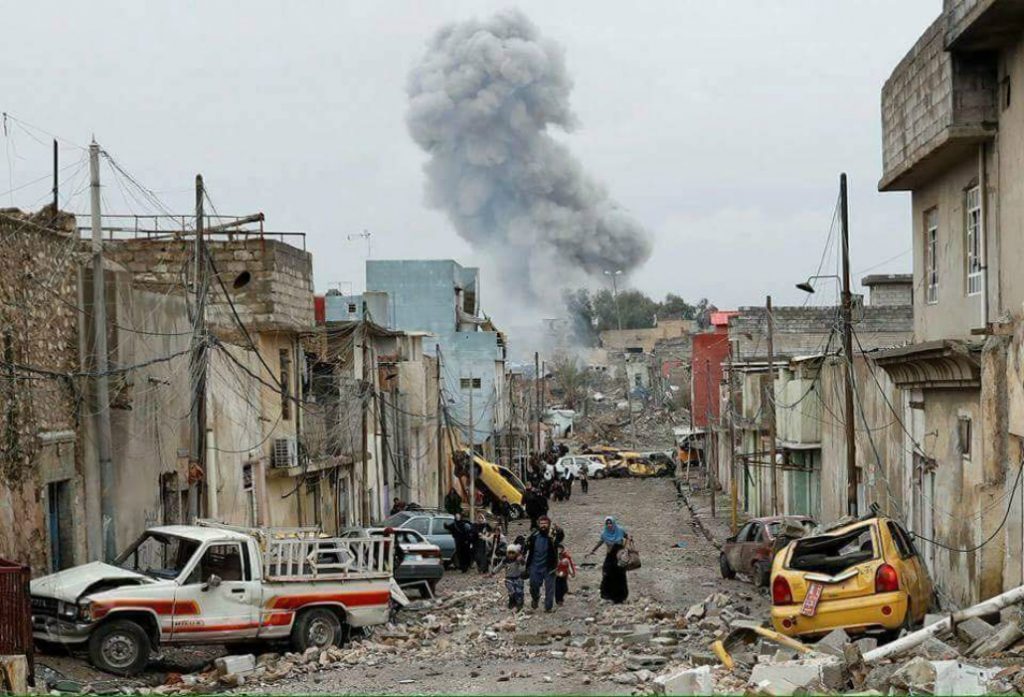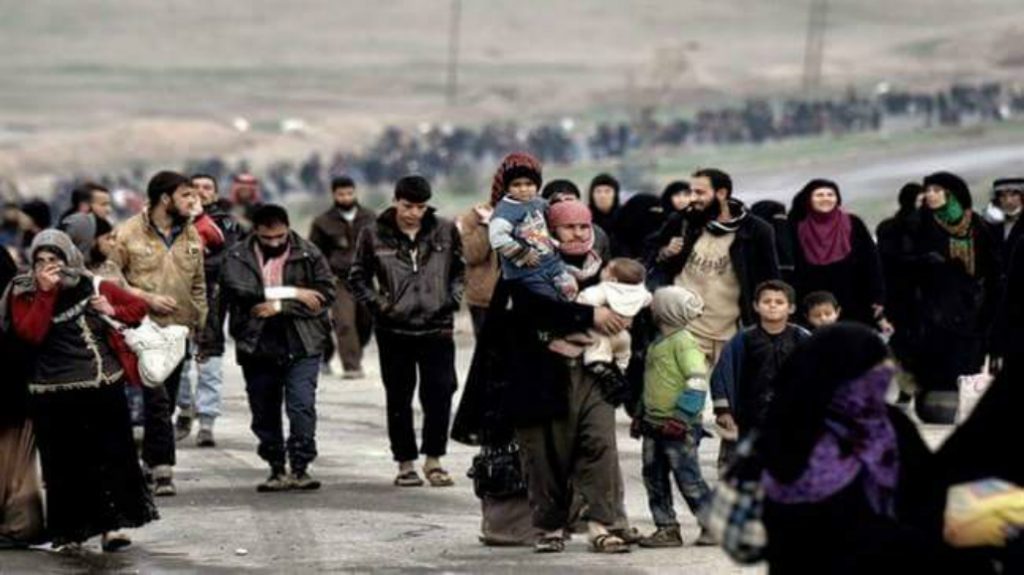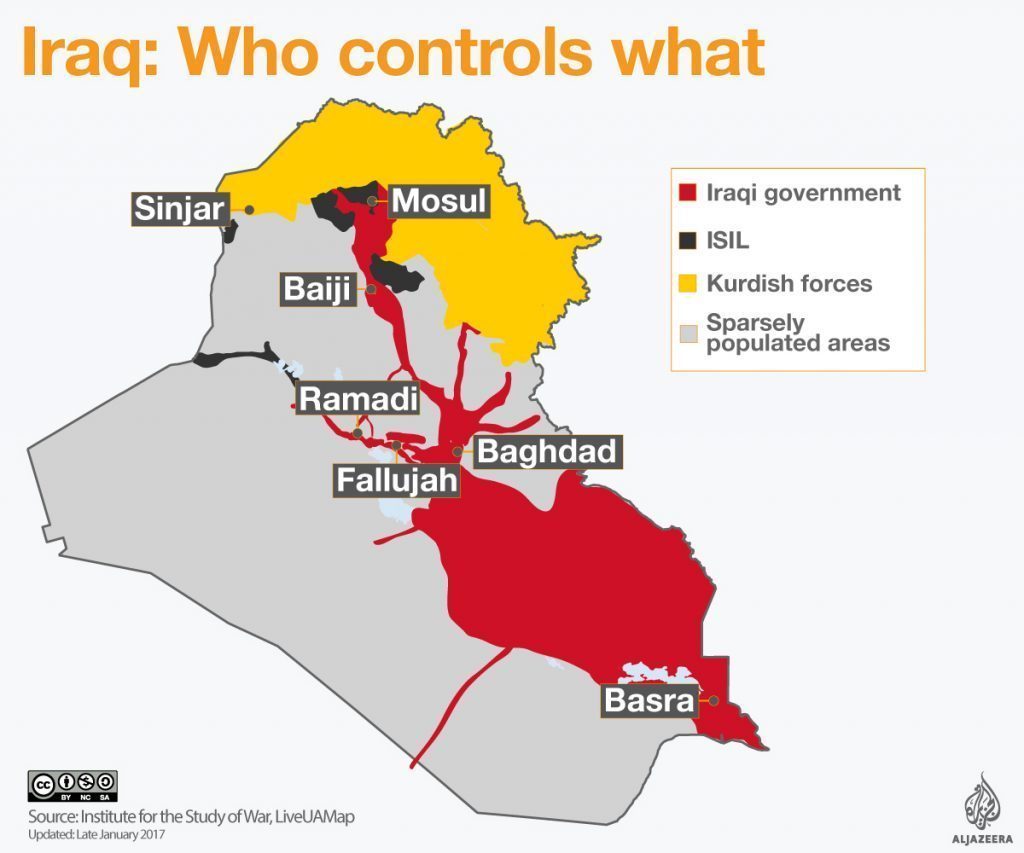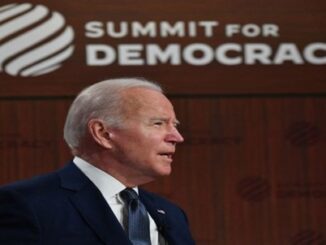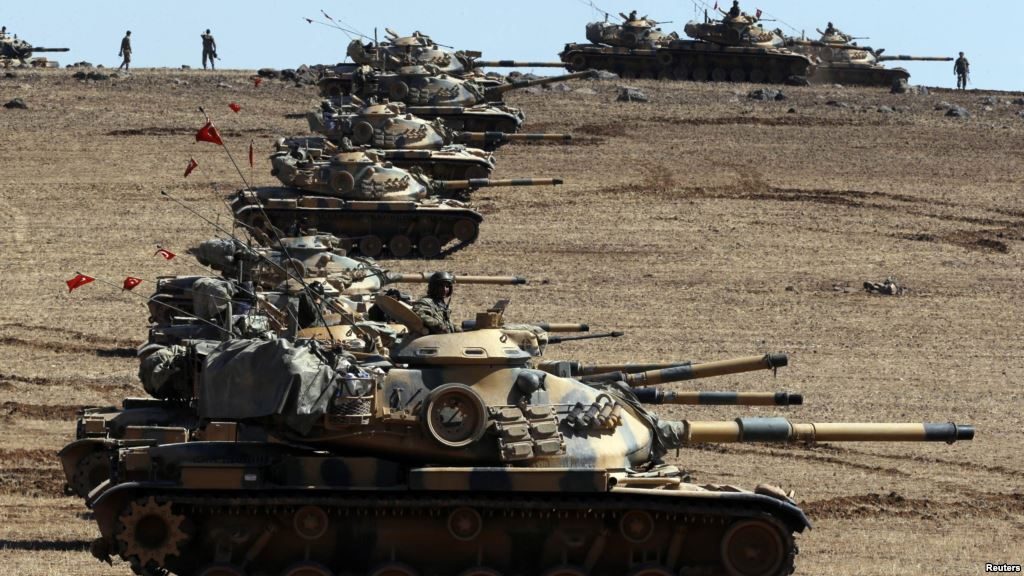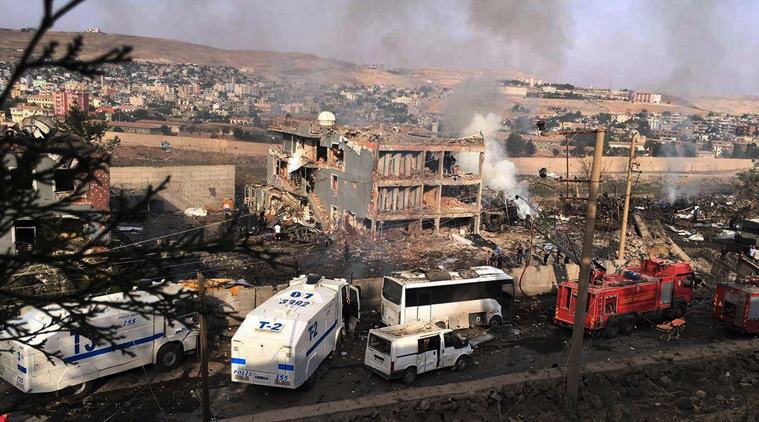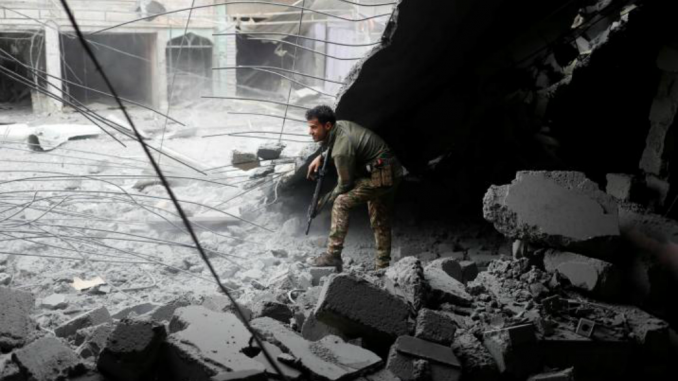
The US-backed Iraqi forces on Tuesday recaptured the main government building in Mosul, the central bank branch and the museum and headed toward the old town, in a new advancement in the military operation to retrieve the city from ISIS’ control.
The United States is providing air and ground support to Iraqi and Kurdish forces trying to dislodge the hardline group from Mosul, captured in 2014.
Iraqi forces captured the eastern side of Mosul in January after 100 days of fighting and launched their attack on the districts that lie west of the Tigris river on Feb. 19.
Islamic State militants who retreated across the Tigris river to western districts also regularly target civilian areas under government control in the east with mortars and grenades dropped from drones.
Several thousand militants, including many who traveled from Western countries to join up, are believed to be in Mosul among a remaining civilian population estimated at the start of the offensive at 750,000.
They are using mortars, sniper fire, booby traps and suicide car bombs to fight the offensive carried out by a 100,000-strong force made up of Iraqi armed forces, regional Kurdish peshmerga fighters and Iranian-trained Shi’ite paramilitary groups.
A new advancement
A Rapid Response team stormed the Nineveh governorate complex in an overnight raid that lasted more than an hour, killing dozens of Islamic State fighters, spokesman Lieutenant Colonel Abdel Amir al-Mohammadawi said.
The two buildings, the bank and the museum, are already in ruins and were not being used by Islamic State, but their capture is a landmark in the push to retake the militants’ last major stronghold in Iraq, now restricted to the heavy populated western half of Mosul.
Among the symbolic buildings retaken overnight was one that had served at Islamic State’s main court, known for sentences including stonings, throwing people off roofs and chopping off hands, reflecting the group’s hardline ideology.
The militants looted the central bank when they took over the city in 2014 and took videos of themselves destroying archaeological artifacts. Traffic in antiquities that abound in the territory under their control, from Palmyra in Syria to Nineveh in Iraq, was one of their main sources of income.
Islamic State snipers continued to fire at the main government building after it was stormed, restricting the movements of the soldiers, and forces pushing further into western Mosul came under rifle and rocket fire.
“The fighting is strong because most of them are foreigners and they have nowhere to go,” said the head of a sniper unit for the Rapid Response, al-Moqdadi al-Saeedi.
Heading towards the old city
Recapturing the complex of government buildings would help Iraqi forces attack the militants in the old city, in addition to retrieving a second bridge on Tigris river, which will shield the back of the advancing forces.
The CTS forces had fought their way well into the Mansour neighborhood and were trying to advance street by street, sending heavy fire on IS sniper positions, a Reuters correspondent visiting the special forces’ front lines reported.
Federal Police units arrived at a house that CTS forces were stationed in but had to move out, one-by-one, to a neighboring building as IS rocket fire hit homes nearby.
One CTS operative on the ground said he thought it would take a few hours to retake Mansour, one of Mosul’s biggest neighborhoods which lies southwest of the old city and could serve as a base to advance into the historic center.
U.S. special forces were seen walking between buildings in the same area, some carrying assault rifles with scopes and silencers. Helicopters attacked targets just to the north and thick smoke filled the sky from various explosions.
The catastrophe of Mosul
These military operations, however, worsened the living conditions in the city and caused tens of thousands of civilians to flee in the past weeks.
Residents of the western part of Mosul have launched a campaign using hashtag #MosulCatastrophe in order to attract the attention of the Iraqi government and global community to the horrific humanitarian situation in the city.
The activists uploaded a letter with an appeal to the Prime Minister of Iraq, Haider al-Abadi, and to the rest of the world, on their social media page called “Mosul Eye”.
This letter is an appeal to save the remaining residents of the western part of Mosul by providing medical aid, food and water to the suffering people.
The individuals behind this campaign are requesting the world to act fast and take urgent measures to free the city from the clutches of Daesh terrorists. The campaigners also appealed for the establishment of a provisional military government and to recognize the disastrous situation in the city.
“The situation in the city has reached a point where people are forced to eat garbage and waste because there is simply no normal food left. On Friday, three pregnant women died, 18 children died due to lack of water and nutrition. Dozens of civilians perished from shelling and clashes,” a paragraph from the letter reads.
Hundreds of thousands displaced
The International Organisation for Migration (IOM) estimates, in a report released on Sunday, said 45,000 people have fled west Mosul since the push to seize it from ISIS began in February.
More than 17,000 people arrived from west Mosul on February 28 alone, while over 13,000 came on March 3, according to the IOM.
With this latest statics, the whole number of civilians displaced by the military operations reached more than 200.000.
That number may still rise sharply. The United Nations last month warned that more than 400,00 people, more than half the remaining population in western Mosul, could be displaced. Fears of more chemical attacks are driving some people out.
On Saturday, a senior Iraqi government official publicly criticized UN-led efforts to aid those displaced by the west Mosul fighting, while the UN said that such assistance is the “top priority”.
“Unfortunately, there is a clear shortfall in the work of these [UN] organizations,” Jassem Mohammed al-Jaff, the minister of displacement and migration, said in a statement.
“Because the camps are operating at full capacity, the refugees are now being brought to the Kurdish regions here in northern Iraq,” a journalist said.
“There are buses behind us that have just arrived with more arrivals. We are talking about thousands and thousands of people.”
“Iraqi authorities say an average of 10,000 people are leaving every day,” she added. “Everyone we’ve spoken to here is telling us an unimaginable story.”
No secure humanitarian corridors
Even when they are fleeing, death keeps hunting the Iraqi civilians as there are no safe humanitarian corridors out of the city and ISIS militants were shooting any one who tries to leave.
“There is no secure humanitarian corridor to get out of the neighborhoods that have been cleared, but even then there is still crossfire,” she said.
“They [civilians] are having to make their way over barren land … just southwest of Mosul. We have seen people walking across land; people in wheelchairs, women with children exhausted and terrified, also leaving relatives behind because they are not sure if the route is secure.”
Some of the displaced were moving from areas already under Iraqi military control, afraid of the ongoing fighting and eager to move to safety.
Others escaped across the frontline, waiting until they saw Iraqi forces in the distance and running towards them with white flags.
Along the way, they faced horrifying scenes.
“There were bodies in the street as we walked, children, pieces of bodies,” Safana, 23, told the AFP news agency, as she waited in a food distribution queue in the Hamam al-Alil camp.

